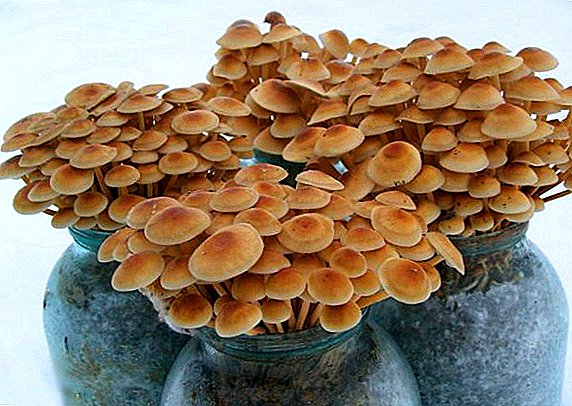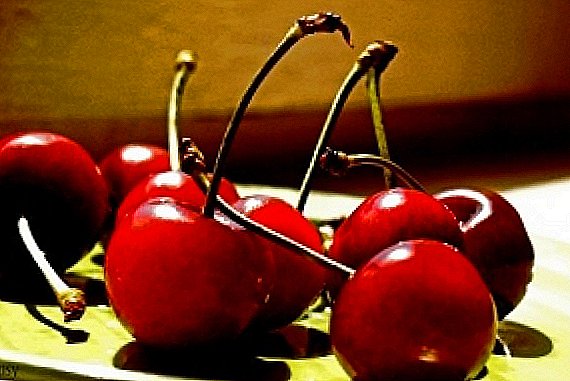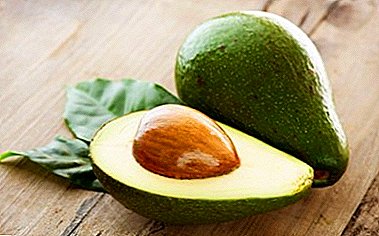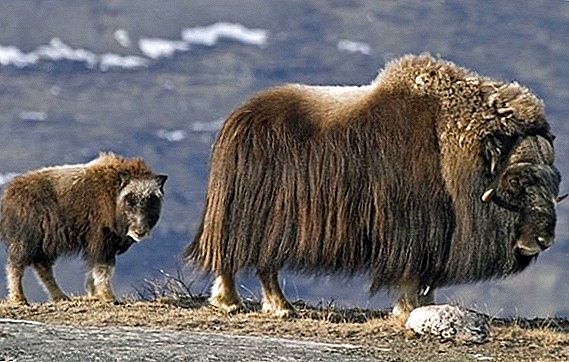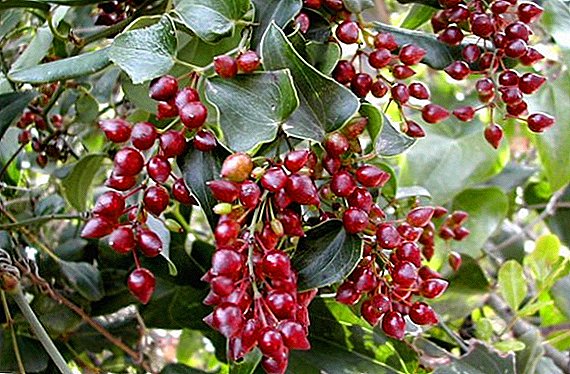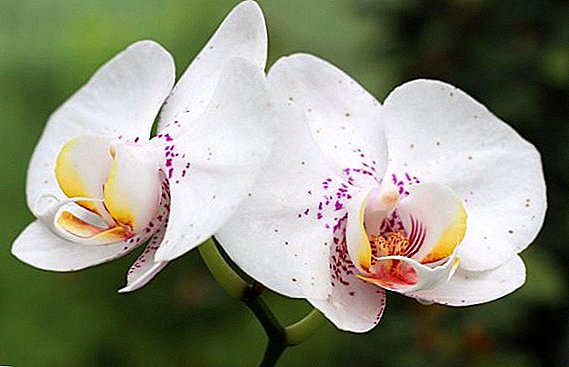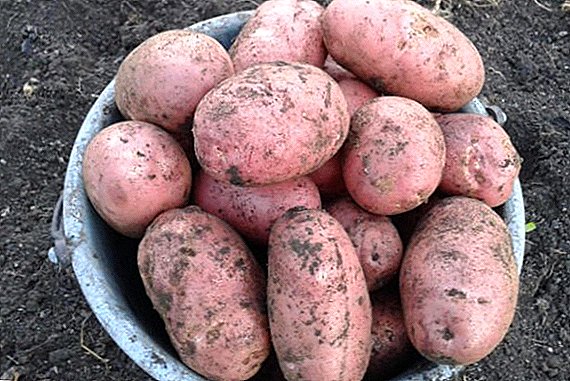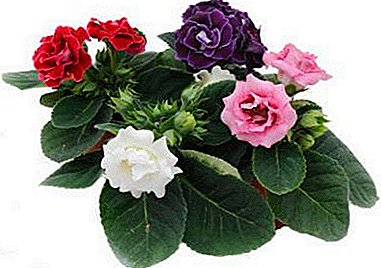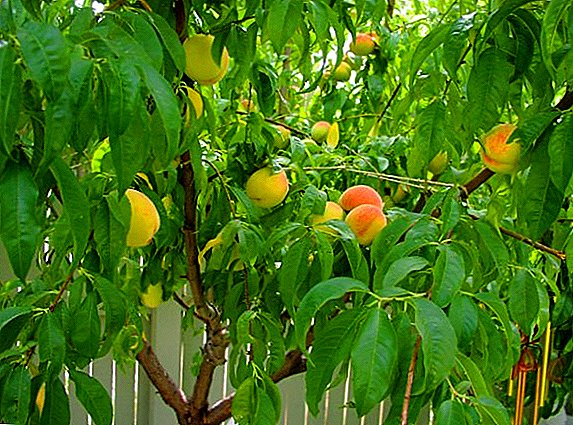 A peach is a tender tree that is afraid of frost, various pests and, of course, disease. One of the most typical and dangerous is called peach leaf curl. What is it, and how to deal with it, tell you next.
A peach is a tender tree that is afraid of frost, various pests and, of course, disease. One of the most typical and dangerous is called peach leaf curl. What is it, and how to deal with it, tell you next.
Did you know? From where the peach spread throughout the world, is not reliably known. Researchers have determined that the wild-looking peach Prunus davidiana Franch, which is found near Beijing (China), is closest to it. But it is believed that the plant has penetrated from northwestern India to Persia, from where it then spread throughout Europe. In Italy, the first peach appeared in the middle of the 1st century. Now actively cultivated in the warm parts of Eurasia and America.
What is peach leaf curl
 The disease is considered the most common and is among the leaders in the frequency of damage to the peach tree. It appears on the shoots and young leaves. And if the leaves are already 2 weeks old, the chance to pick up the disease is minimal. Most often they get sick at the age of 5-8 days.
The disease is considered the most common and is among the leaders in the frequency of damage to the peach tree. It appears on the shoots and young leaves. And if the leaves are already 2 weeks old, the chance to pick up the disease is minimal. Most often they get sick at the age of 5-8 days.
The disease manifests itself as blistering blistering on the leaflets. At first they have a light green color, then become amber-red, and then brown. They appear wax bloom, where the spores of the fungus ripen.
The bubbles become brittle, and the leaves themselves thicken, dry, blacken and crumble. First lower, then in the middle of the shoot. As a result, a few leaves remain on its tip, and it looks like a tassel. As a rule, one- and two-year-old shoots are affected.
The branches themselves are also affected by the disease. They become yellowish, thicken, bend, and eventually dry up completely. The internodes become thicker and shorter. Accordingly, the following year, a tree that has not sprouted from last year does not bear fruit.
With a strong defeat, the buds die off in the first year of infection, without bringing fruit. If they manage to form, they also turn out to be deformed.
Did you know? The source of infection is the spores of Taphrina deformans, marsupial fungus. Infection of the tree occurs once a year, in the spring. Spores penetrate into the kidneys, as well as into cracks and wounds of shoots from which gum begins to ooze. Affected leaves become a breeding ground for new spores, which are scattered across the bark of the tree, where they hibernate, and in the spring they begin a new cycle of infection. Taphrina deformans affects mainly fruit trees, but most often nectarines and peaches.
 If you do not sprinkle the peach against curliness in time, in May you can have a bare tree in the garden. It weakens and may not survive the frost next winter.
If you do not sprinkle the peach against curliness in time, in May you can have a bare tree in the garden. It weakens and may not survive the frost next winter.
Prevention measures for curl
The first and main preventive measure to combat curliness - choosing the right place for peach planting. It should grow on the sunny side, in a dry place and at a considerable distance from other trees.
Important! The rapid spread of the disease contributes to high humidity, low ambient temperature, sudden changes in temperature. Therefore, the spring period is the most dangerous for the peach tree.
Among the preventive measures the most popular is peach treatment with copper sulphate (1%), Bordeaux liquid (3%) or fungicide. Of the latter, recommend "Skor", "Hom", "Raek".
 Prophylactic treatment spend 2 times a year. The first is in the autumn after dropping the leaves from the trees. The second is in the spring before the appearance of the first leaves. Although some experts recommend that after the first spraying, repeat after 4 to 5 days.
Prophylactic treatment spend 2 times a year. The first is in the autumn after dropping the leaves from the trees. The second is in the spring before the appearance of the first leaves. Although some experts recommend that after the first spraying, repeat after 4 to 5 days.
Important! Spraying done in windless and dry weather. Otherwise, the wind will carry the solution to the neighboring plants, bypassing the peach, or the rain will immediately wash it away.
In the autumn, before processing, it is recommended to cut the affected areas in the trees.
How to deal with the disease? Preparations to combat leaf curl
Treating a tree for this disease is very difficult and time consuming, so it is recommended that you pay enough attention to preventive methods right after planting.
And an important place among them occupy sanitary work. They provide for pruning or complete removal of the affected shoots, which must be immediately collected and burned outside the site.
If these activities are held in the fall, along with them, it is necessary to burn all the leaves fallen from the tree. In the spring, those shoots are pruned, which clearly show signs of disease.
Did you know? There is still no consensus among gardeners about when pruning is more effective in spring: in May, when infected shoots are visible, but disputes have not yet spread over the tree, or in early spring along with the removal of frozen and dried shoots.
 In addition to processing the Bordeaux peach mixture, the use of fungicides is effective in the treatment. Most often it is recommended to use "Skor", because it is non-toxic, and therefore safe for the environment and gardeners themselves.
In addition to processing the Bordeaux peach mixture, the use of fungicides is effective in the treatment. Most often it is recommended to use "Skor", because it is non-toxic, and therefore safe for the environment and gardeners themselves.
On one hundred square meters you need 2 ml of the drug (1 ampoule), which must be dissolved in 10 liters of water. The therapeutic effect lasts up to 5 days, and prophylactic - up to 10 days.
Apply also "Abiga-Peak" at the rate of 40 - 50 g per 10 l of water. It should be used 4 times with breaks of 2 weeks.
Important! Experienced gardeners know that peach is a fastidious plant that requires strict adherence to the rules of caring for it, and special climatic conditions. He reacts no less sensitively to various drugs. If a little bit wrong with the dosage or the period of spraying, the tree can lose all foliage, fruit, slow down their development or dry out altogether.
Folk remedies to combat curliness
 As already mentioned, chemical treatment of peach with fungicides and Bordeaux liquids is the most effective methods of dealing with the disease. But some gardeners are trying to use chemicals at the very least, trying with all their might to cure the plant with folk remedies.
As already mentioned, chemical treatment of peach with fungicides and Bordeaux liquids is the most effective methods of dealing with the disease. But some gardeners are trying to use chemicals at the very least, trying with all their might to cure the plant with folk remedies.
So, recommend using spraying infusion of tobacco. A kilogram of dried tobacco or tobacco dust is poured 5 liters of boiling water and insist 3 days. Infusion filter, diluted with water 1: 2 and spray the affected trees 2 times with an interval of 2 weeks.
Effective is considered emulsion, prepared from 90 g of hydrated lime and 350 g of softened clay, diluted in 10 liters of water. First you need to dilute the clay with water until smooth, and then, stirring slowly, introduce slaked lime. The solution should be without sediment.
You must use it immediately, without leaving the next time. But the expected effect will be obtained only with regular spraying of trees. This rule applies to other popular methods.
But most often the fungus is resistant to folk broths. Therefore, if you do not want to use serious drugs for treating wood, in addition to trimming peach leaves affected by curliness, it is recommended to spray 1% Bordeaux liquid, harmless means "Biostat", which consists of essential oils, as well as special blends.
 For example, with a mixture of lime and ground sulfur in a 1: 2 ratio or with a solution of colloidal sulfur suspension (1%). In this case, spraying is recommended at air temperature above 25 ° C. But remember, if folk remedies do not give a visible result, do not neglect the treatment of peach fungicides.
For example, with a mixture of lime and ground sulfur in a 1: 2 ratio or with a solution of colloidal sulfur suspension (1%). In this case, spraying is recommended at air temperature above 25 ° C. But remember, if folk remedies do not give a visible result, do not neglect the treatment of peach fungicides.
Peach varieties resistant to leaf curl
Many gardeners claim that peach varieties that are resistant to curly leaves do not exist, they are just less likely to have varieties whose fruits have yellow flesh.
Others point out that resistance is demonstrated by the varieties Redhaveng, Succulent, Kiev 12, Nadranny Kiev, Bagrinovskiy, In memory of Rodionov, Donetsk yellow, Saturn, Yellow, Moretini, Simferopol Early, Early Kuban.
But whichever variety you choose, preventive measures are the best protection for peach curl.
 Peach is a tender and capricious tree. It may die if agricultural practices are not followed, but it suffers even more from various diseases. Leaf curl is the most common among them. Save the tree from it can only be timely preventive methods.
Peach is a tender and capricious tree. It may die if agricultural practices are not followed, but it suffers even more from various diseases. Leaf curl is the most common among them. Save the tree from it can only be timely preventive methods.
But if the disease struck your pets, the most effective methods are pruning and treating trees with chemicals. Folk remedies in this case are ineffective and can be dangerous. The disease spreads quickly. During their use, valuable time can be lost.


